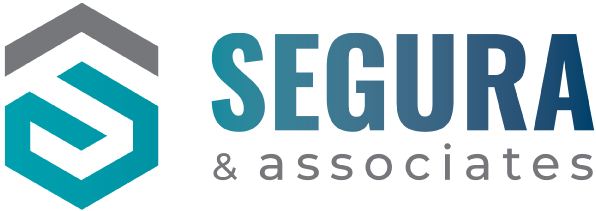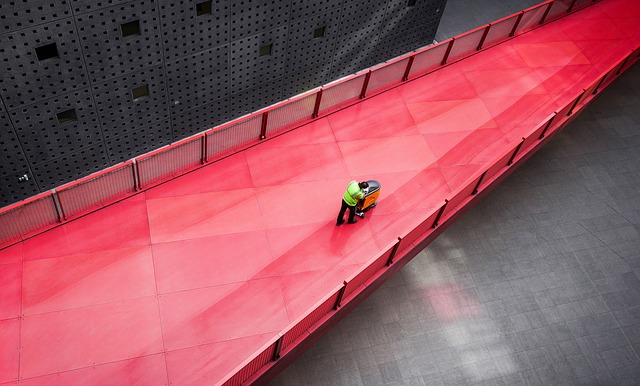Many in-house cleaning operations do little to promote what they do and the benefits they bring. Either the heads of these operations fail to understand the value they offer, or they simply do not know how to wave their benefit flags. As a result, an organization’s leaders often view them as non-revenue generating entities that cost money but bring little value.
Often housekeeping operations only receive acknowledgement when things are not done, which is why whenever budgets must be reduced, the first place company leaders look is the low-hanging fruit-the janitorial staff. Custodial operations are told they need to slash staff or cut costs; adjustments they readily make without argument. Eventually as more and more services and staff are trimmed, there comes a point where their operations are outsourced.
The cold reality is more and more facilities are outsourcing their cleaning services. In many cases, this is due to budgetary restraints, but just as often, it is because decision-makers lack a clear picture of the value their in-house cleaning staff brings.
Now is the time for housekeeping operations to toot their own horns, and let others know what they do. Everything from their use of green chemicals and equipment to sustainable processes and more needs to be shouted from the rooftops, if housekeeping departments stop the outsourcing movement in its tracks.
Marketing-approached Cleaning
Custodial work primarily deals with cleanliness, which plays an important role in any facility. People feel more comfortable and are more productive in facilities that are clean. There are two types of cleaning: Reactive cleaning, where someone points out that an area looks dirty and needs cleaning, and marketing-approached cleaning, i.e. cleaning that is performed because it brings value to a facility’s core business. In a marketing approach to cleaning, housekeepers perform the normal tasks–emptying trash, filling dispensers, dusting, vacuuming and washing floors, but also shine up the finer details–the corners, the baseboards, the glass doors, the handles and so on.
The importance of this cannot be under estimated. Imagine going to the doctor’s office and having smudged glass and a sticky door handle be the first thing you see. Then, once in the lobby, you encounter a stained carpet and a layer of dust on the tables. How would that influence your impression of that facility? With a marketing approach to cleaning, custodians regularly address these things. They do not wait for the facility to appear dirty. If things need to shine, housekeepers make sure they are shiny. If there is carpet in the lobby, housekeepers make sure spots are removed. In essence, housekeepers proactively clean the facility.
This is something janitorial leadership can sell. They can say: “We do this because we are concerned about the way the company is presented. We take responsibility because we want people to have a good first impression when they enter the building.”
Sustainability is another example of an important and critical endeavor that often is slipped under the rug. While it is common for custodial operations to have a green program, few operations promote it. Moreover, if they do mention it, they tell others that because they use vacuums with HEPA filters, microfiber and green chemicals; they increase custodians’ productivity, a phrase that is easily turned against them when it is time to trim staff. If you are more productive, doesn’t that mean you need less people to do the job?
In a marketing-based approach, custodial leaders share how these tools capture fine dust, the particles that cannot be seen but can have a negative impact on people’s health. They tell company leadership that sustainable tools and green chemicals increase everyone’s productivity because they improve indoor air quality. They then cite documentation that proves how important indoor air quality is to people’s health.
“It is important to understand that sustainability is not the same as green cleaning,” says David Holly, director, The Ashkin Group LLC. “The easiest way to think of this is that green cleaning is a small, but important, part of the overall sustainability of an organization. So, first we want to be sure we are doing everything we can to maximize our green cleaning efforts. An excellent next step would be to minimize our impact on the organization’s sustainability footprint. We can do this by choosing products that are not only green but manufactured and distributed in a way that maximizes sustainability–your vendor can be a big help with this. You might also consider looking at some of the new technologies that use ozonated or electrolyzed water. This type of product has positive impacts on the entire supply chain. Finally, it is important to train our cleaning staff to be looking for and reducing waste throughout the operation–from water, to electricity. Identifying leaks or equipment (computers, etc.) that are left on that could be powered down at night can have significant impacts on reducing resource consumption and cost.”
Many in house custodial departments are already pursuing these sustainability initiatives; unfortunately, few people are aware of these activities outside the department.
Wave Your Benefits Flag
Whether a hospital, elementary school or office building, most organizations have a communications system designed to share information with building occupants. This may be email, e-newsletters, or printed company updates. In-house custodial operations should proactively use these tools to promote the work they do.
The perceptive, self-promoting custodial operation submits a column or contributes something to these communications channels every month or even every week. Their contributions might mention new programs or equipment, and the results they are seeing.
Think outside the box when doing these updates. When the custodial staff does a special project, maybe they revitalized a floor by using new technologies, let others know. The communication could say: Last weekend the custodial staff worked on the floors in this area and was able to revitalize them rather than have them replaced. This is the technology we used and here’s how much money we saved by cleaning, rather than replacing, the floors.
It’s also important to network with key leaders within the organization. For example, most facilities have someone in charge of leading environmental or sustainability programs. Custodial operations should know who these individuals are and approach them so they can be active participants in the development of company sustainability programs.
Custodial leaders can submit their ideas for new green technologies or sustainable methods to these leaders. For instance, they might suggest adding a new water-saving device to urinals or purchasing a cleaning device that uses water rather than chemicals. Sustainability leaders love these things, but all too often janitors or custodians fail to share information about them. However, if custodial operations can get sustainability leaders on their side, they have a natural ally within the organization.
Besides keeping sustainability leaders informed about the latest and greatest technologies and cleaning methods available, it’s also important to share the sustainable processes and equipment the janitorial operation already has in place. Ask yourself: Do people know what you do? Do people know you’re using this technology or that you have a green cleaning program? It’s important that cleaning operations tell this story.
Consider whether there are other groups beside sustainability committees that custodians can be a part of. If there are plans to renovate the facility, participate in the planning to help spec water- or energy-saving technologies or sustainable flooring that will stand the test of time.
Once new sustainable technologies are in the facility, custodial operations need to remember to let others know it was their idea to add them. Let’s say the custodial staff was integral in adding water-saving devices to urinals. Why not put an information card next to the urinals that tells how much water is saved with this improvement, and attribute the information to the custodial staff? If the custodians were actively involved in the recycling program, put a blurb about how much waste has been diverted from landfills because of this program on every recycling container and attribute the message to the custodial staff.
Another area not lauded often enough is staff training. Custodial operations typically provide workers with consistent training that is well documented, and often far beyond the training received by another other position within the facility. Unfortunately, beyond using this documentation for certification purposes, this information is never shared. Custodial operations should tout the training workers receive, how often they receive it, and how this training affects the entire facility.
“A well laid out and organized custodial program done by a well-trained staff offers management a lot of pluses,” says Maurice Dixon, owner of Dixon and Associates, which offers training and consulting services to the janitorial profession. “These pluses convey a very positive image to employees, visitors and customers, and I believe add a plus to the bottom line.”
Dixon goes on to list the following pluses that custodial departments should do a better job of sharing:
1) Cleaner, Healthier and Safer Buildings,
2) Protection of Property,
3) Reduction of Risk,
4) Positive Image, and
5) Pride in Results.“All of these, without question add to a company’s bottom line,” Dixon says. “Good quality cleaning doesn’t cost–it pays.”
What also pays is a good plan on how custodial operations plan to promote what they do. Now is the time to wave your benefits flag!
Segura & Associates works with all types of organizations helping them operate their facilities in a healthier, more sustainable, and more efficient manner. Click here to contact Segura & Associates.


